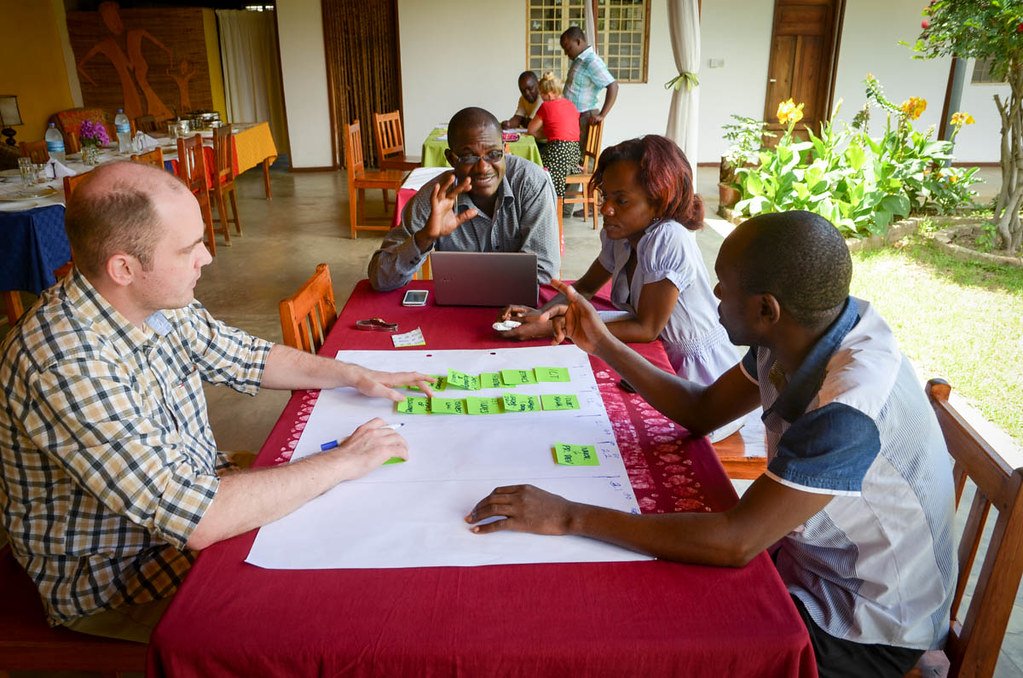Imagine having the skills of a master locksmith, adeptly maneuvering through tumblers and pins with ease, effortlessly conquering the puzzles that guard our most valuable possessions. Locksport, the art of lock picking as a recreational activity, empowers enthusiasts to explore the mechanics of locks, pushing the boundaries of their knowledge and honing their dexterity. Unlocking this captivating world yourself can be a thrilling journey, but what if you could go a step further and create your own DIY Locksport Certification Program? With a touch of creativity and a dash of ingenuity, you can embark on a quest to design a comprehensive program that not only elevates your own locksmith skills but also assists others on their own lock-picking odyssey. Get ready to forge your own path as we delve into the realm of creating a DIY Locksport Certification Program – where adventure awaits at the twist of a lock.
Table of Contents
- Deciding the Scope and Objectives of a Locksport Certification Program
- Designing the Curriculum: Key Concepts and Skillsets to Include
- Creating Practical and Theoretical Assessments: Measuring Competency Effectively
- Establishing Guidelines and Standards for Certification
- Collaborating with Locksport Communities: Incorporating Feedback and Continuous Improvement
- Q&A
- The Conclusion

Deciding the Scope and Objectives of a Locksport Certification Program
When it comes to creating a comprehensive locksport certification program, determining the scope and objectives is crucial. This step sets the foundation for the entire certification process, ensuring that it aligns with the goals and values of the locksport community. By clearly defining the scope and objectives, the program can provide participants with a structured and rigorous learning experience while promoting ethical and responsible locksport practices.
Here are some key considerations to determine the scope and objectives of a locksport certification program:
- Skills and Knowledge: Identify the specific skills and knowledge areas that the certification program should cover. This could include lock picking, lock manipulation, key decoding, understanding lock mechanisms, and more.
- Ethics and Legal Compliance: Emphasize the importance of ethical locksport practices and ensure that the program promotes responsible behavior. Highlight the legal implications and boundaries of locksport activities.
- Experience Levels: Determine the target audience the certification program aims to cater to. Consider different levels, such as beginners, intermediate, and advanced, to offer varying levels of certification.
- Evaluation Criteria: Establish clear evaluation criteria to assess participants’ proficiency in locksport skills. This could include practical assessments, written exams, or both, maintaining a fair and objective assessment process.
- Continued Learning: Encourage ongoing professional development within the locksport community by providing additional resources, workshops, or advanced certifications for individuals who wish to further enhance their skills.
By carefully defining the scope and objectives of a locksport certification program, it becomes a valuable tool for individuals to gain recognition for their locksport expertise and contribute positively to the locksport community as a whole.

Designing the Curriculum: Key Concepts and Skillsets to Include
When it comes to designing a curriculum, there are certain key concepts and skillsets that cannot be overlooked. These important components form the foundation for a well-rounded and comprehensive educational experience. Whether you’re developing a curriculum for a school, training program, or workshop, incorporating these elements will help learners develop the necessary knowledge and abilities for success. So, what are some key concepts and skillsets to consider? Let’s explore a few:
- Critical thinking: Encouraging students to think critically is essential for their overall intellectual development. By incorporating activities and assessments that foster critical thinking skills, learners can develop the ability to analyze, evaluate, and apply knowledge in a variety of contexts.
- Communication: Effective communication is a vital skill in today’s interconnected world. Including opportunities for students to practice written, verbal, and nonverbal communication will equip them with the tools needed to express ideas, collaborate, and interact with others.
- Problem-solving: Problem-solving is a valuable skill that empowers individuals to tackle challenges head-on. By incorporating real-life scenarios and hands-on activities, learners can develop problem-solving strategies and enhance their ability to find innovative solutions.
These are just a few key concepts and skillsets that should be included when designing a curriculum. It’s essential to approach curriculum development with a holistic mindset, considering the diverse needs and learning styles of students. By providing a well-rounded educational experience that incorporates these elements, educators can empower learners to thrive in an ever-changing world.
Creating Practical and Theoretical Assessments: Measuring Competency Effectively
When it comes to evaluating competency, it is crucial to design assessments that effectively measure a learner’s practical and theoretical skills. A well-designed assessment not only provides valuable feedback to learners but also serves as a tool to gauge their understanding and capability.
Here are some key considerations to keep in mind while creating assessments:
- Balance between theoretical and practical elements: It is important to strike a balance between assessing theoretical knowledge and practical application. A combination of multiple-choice questions to test theoretical understanding, and hands-on tasks or simulations to assess practical skills, can help obtain a comprehensive evaluation of competency.
- Clear and concise instructions: Provide clear and concise instructions for each assessment task to avoid any confusion. Clear instructions help learners focus on the actual content being assessed rather than getting caught up in figuring out what is expected of them.
- Real-life scenarios: Incorporate real-life scenarios into assessments whenever possible. This allows learners to demonstrate their competency in situations they are likely to encounter in their field. By presenting realistic challenges, assessments can better evaluate how well learners can apply their knowledge and skills to solve practical problems.
- Validity and reliability: Ensuring the validity and reliability of assessments is essential. Validity refers to the extent to which an assessment measures what it intends to measure, while reliability relates to consistency in results. Regular review and refinement of assessment items can help enhance the validity and reliability of the evaluations.
By following these guidelines and tailoring assessments to the specific learning outcomes, instructors can create assessments that effectively measure competency and provide learners with valuable feedback to further their development.

Establishing Guidelines and Standards for Certification
Creating a robust framework for certification is a pivotal step towards ensuring quality and consistency in any field. At [Company Name], we recognize the importance of setting clear guidelines and standards to assess the skills and knowledge of professionals seeking certification. By carefully establishing criteria, we aim to foster credibility, enhance professional development, and provide individuals with a meaningful way to validate their expertise.
Our certification process is thoughtfully designed to encompass a wide range of competencies and industry-specific knowledge. To achieve this, we collaborate with industry experts, stakeholders, and thought leaders to identify the core skills required for success. Through extensive research and consultation, we develop comprehensive guidelines that encompass both theoretical knowledge and practical experience. These guidelines form the basis for our certification exams, ensuring that individuals who obtain our certification have met a rigorous set of standards.
Key features of our certification guidelines include:
- Well-defined competency areas: Our guidelines identify the specific areas of expertise that professionals must demonstrate proficiency in. This ensures clarity and transparency throughout the certification process.
- Progressive certification levels: We offer multiple levels of certification to accommodate professionals at various stages of their careers. This allows individuals to progressively build and demonstrate their skills over time, fostering continuous growth.
- Practical application focus: Our certification standards emphasize the ability to apply theoretical concepts in real-world scenarios. This ensures that certified professionals possess the necessary practical skills to excel in their respective fields.
- Regular review and updates: We understand the evolving nature of industries, and thus, our guidelines undergo regular review and updates to stay aligned with the latest trends and advancements.
By setting high standards, we endeavor to create a certification process that not only elevates the individuals achieving certification but also facilitates the overall advancement and professionalism of the industry as a whole.
Collaborating with Locksport Communities: Incorporating Feedback and Continuous Improvement
Locksport enthusiasts form a vibrant and knowledgeable community, deeply passionate about the art of lock picking and security systems. By actively engaging with these communities, we can tap into their expertise and gain valuable insights into our own products and practices.
Incorporating feedback from Locksport communities allows for continuous improvement in our own offerings. Their firsthand experiences using lock picking tools and techniques provide us with crucial data to refine our products, ensuring they meet the evolving needs of both professionals and hobbyists. Through open discussions, we gain a deeper understanding of their challenges, allowing us to develop innovative solutions that directly address their pain points.
Furthermore, collaborating with Locksport communities fosters a positive and collaborative atmosphere, where knowledge sharing is encouraged. By nurturing these relationships, we can create lasting partnerships that benefit both parties involved. We can host workshops, webinars, and events where community members share their expertise and learn from our team as well. This exchange enhances our understanding of their needs, enabling us to better serve our customers and develop cutting-edge products and services.
In summary, embracing collaboration with Locksport communities allows us to harness the collective wisdom of passionate lock pickers. By incorporating their feedback and actively seeking continuous improvement, we strengthen our products and build lasting relationships within the community. Our commitment to engagement and collaboration ensures that our offerings remain at the forefront of the lock picking industry, meeting the evolving needs of professionals and enthusiasts alike.
Q&A
Q: What is locksport?
Locksport is a hobby or sport that involves picking locks or manipulating lock mechanisms to gain access to locked devices, without causing any damage. It is a community of individuals who enjoy exploring the inner workings of locks and learning about the security systems that protect our belongings.
Q: Why would anyone want to create a DIY Locksport Certification Program?
Creating a DIY Locksport Certification Program allows individuals to formalize their skills and knowledge in locksport. It provides a structured path for learning and demonstrates a commitment to ethical locksmithing practices. Moreover, it can help foster a sense of community and encourage the exchange of ideas and techniques among locksport enthusiasts.
Q: What are the benefits of a DIY Locksport Certification Program?
By creating a DIY Locksport Certification Program, individuals can enhance their credibility within the locksport community and beyond. It promotes responsible locksporting and encourages the development of skills in a structured manner. Additionally, having a certification program can facilitate networking opportunities and open doors to participating in competitions or attending specialized events.
Q: How can one start building a DIY Locksport Certification Program?
To create a DIY Locksport Certification Program, one should begin by defining the levels or tiers of certification based on increasing levels of difficulty and knowledge. Then, establish specific learning objectives and skill requirements for each level. Finally, design assessments or tests to evaluate the participants’ proficiency in the required skills and knowledge.
Q: What topics should be covered in a DIY Locksport Certification Program?
A DIY Locksport Certification Program should cover a range of topics, such as lock types, lock mechanisms, lock picking techniques, key decoding, impressioning, and security systems. It should also include sections on ethics, legal considerations, and safe and responsible lock manipulation practices. The program should aim to provide a comprehensive understanding of locks and related security technologies.
Q: Are there any prerequisites for participating in a DIY Locksport Certification Program?
While not mandatory, having a basic understanding of locks and lock picking can be helpful before participating in a DIY Locksport Certification Program. However, the program should be designed to cater to individuals of various skill levels, allowing beginners to progress gradually and develop their skills along the way.
Q: Can a DIY Locksport Certification Program be taken online?
Yes, a DIY Locksport Certification Program can be adapted to an online format. Through virtual tutorials, video demonstrations, and online assessments, individuals can engage with the program remotely. However, hands-on practice and physical assessments may still be necessary to ensure proficiency in lock picking skills.
Q: Is a DIY Locksport Certification Program recognized by professional locksmith associations?
The recognition of a DIY Locksport Certification Program by professional locksmith associations may vary. Some associations may view the program positively as a reflection of dedication and knowledge in the field, while others might have specific requirements for certification. It is advisable to research and approach relevant locksmith associations for information and potential recognition.
The Conclusion
In conclusion, embarking on the journey to create your very own DIY Locksport Certification Program is an exciting endeavor that will surely ignite a passion for the art of lock picking. As you’ve delved into the fascinating realm of locksport, you have undoubtedly witnessed the captivating blend of puzzle-solving and skill-building that this craft offers.
By following the step-by-step process outlined in this article, you can confidently design a comprehensive program that encompasses essential lock picking techniques, advanced challenges, ethical principles, and a sense of camaraderie within a community of lock enthusiasts. Remember, fostering an environment that promotes responsible use of these skills is paramount to the growth and acceptance of the locksport community.
As you embark on this remarkable initiative, embrace your role as a mentor and catalyst for innovation within the locksport world. Empower aspiring lock pickers with the knowledge and resources they need to excel, while always encouraging ethical behavior and respect for the locksmithing profession.
Just as a lock’s intricate mechanism holds secrets waiting to be revealed, your DIY Locksport Certification Program will unlock a world of possibilities for individuals seeking to explore this captivating art form. So, gather your tools, nurture your creativity, and watch as your program becomes a beacon of inspiration for aspiring lock pickers around the globe.
Remember, the power of locksport lies in its ability to challenge our intellect, fuel our curiosity, and bring diverse minds together in pursuit of excellence. So, go forth, fellow locksport aficionados, and create a DIY Locksport Certification Program that will inspire the next generation of lock pickers to open doors, not only metaphorically, but also metaphorically and ethically. Happy picking!
As an affiliate, my content may feature links to products I personally use and recommend. By taking action, like subscribing or making a purchase, you’ll be supporting my work and fueling my taco cravings at the same time. Win-win, right?
Want to read more? Check out our Affiliate Disclosure page.